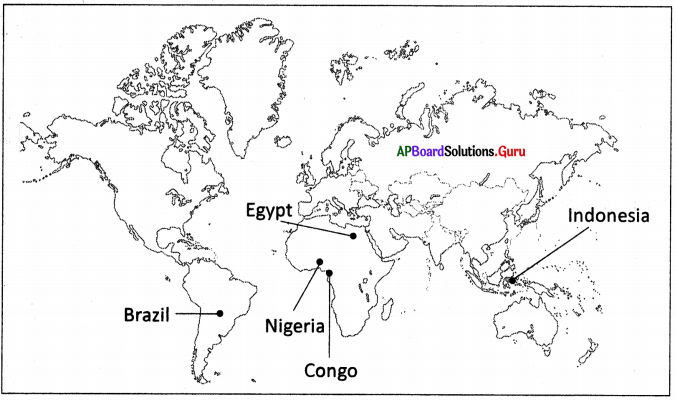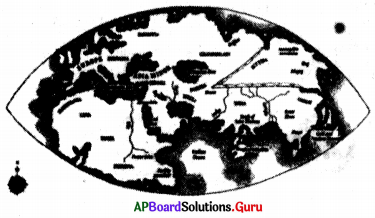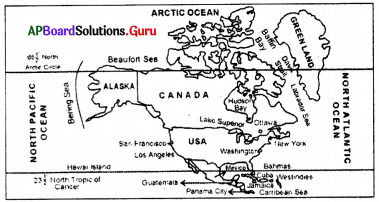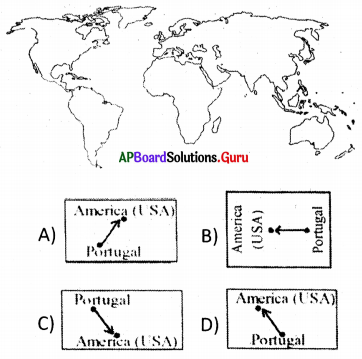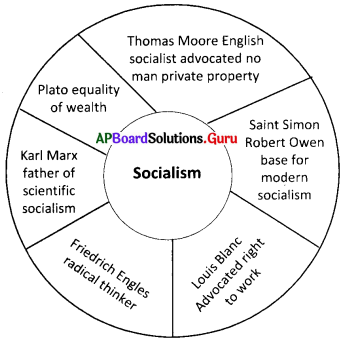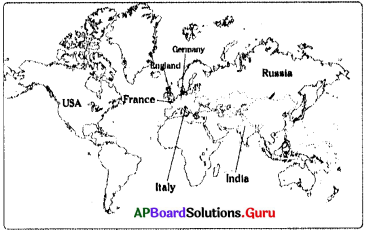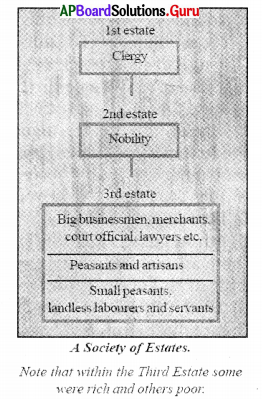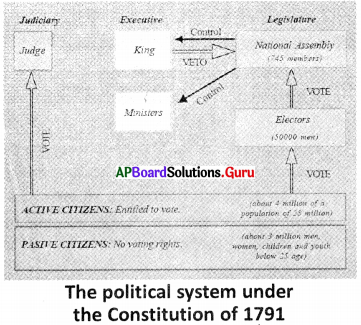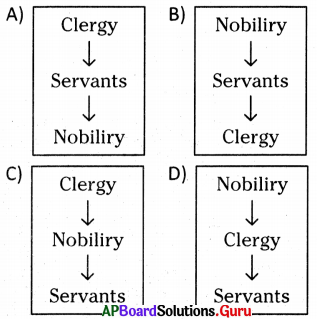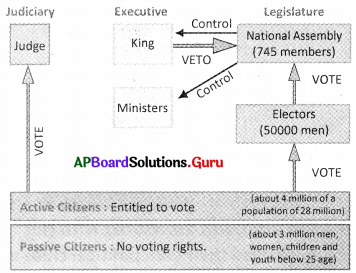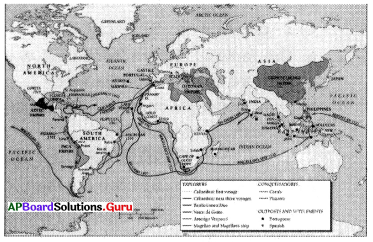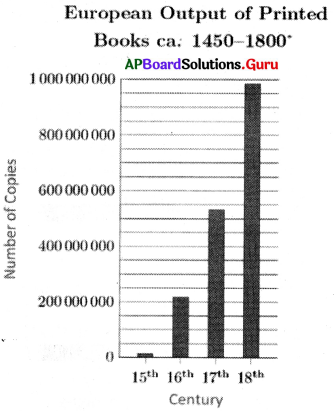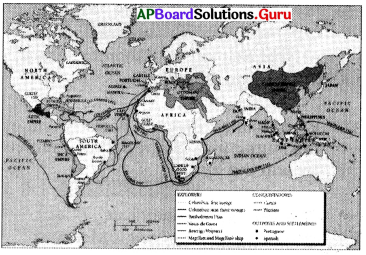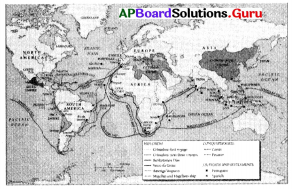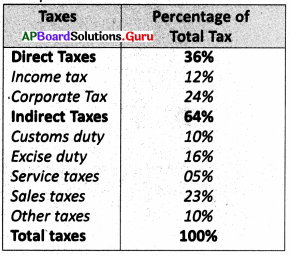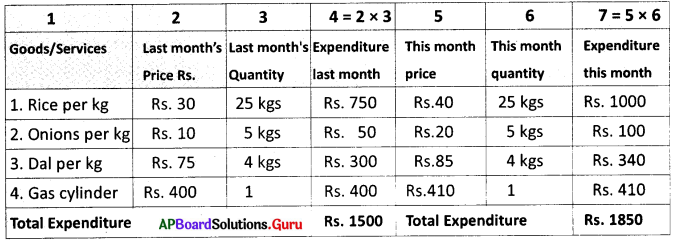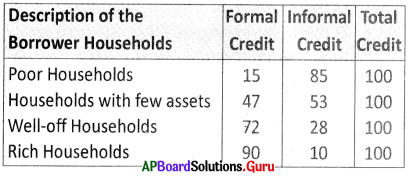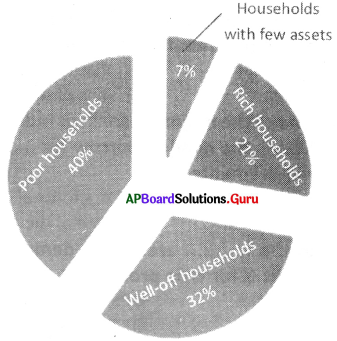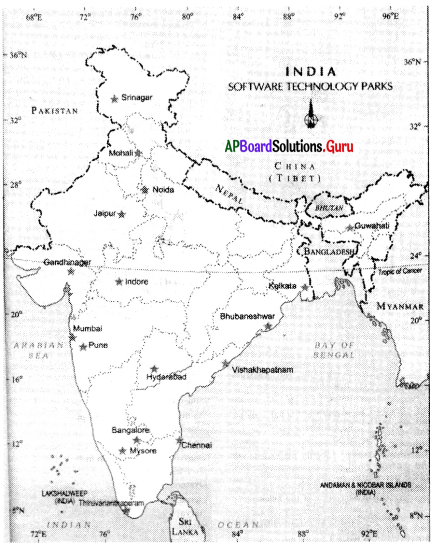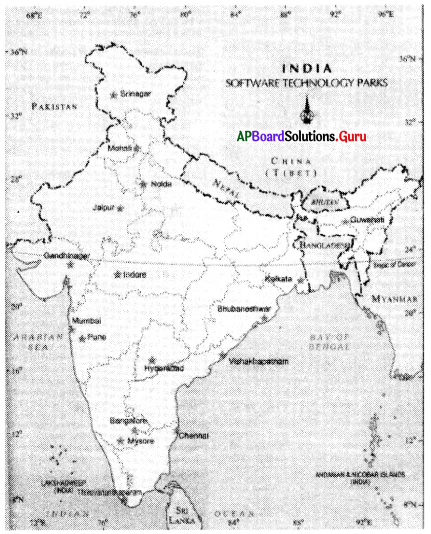Practice the AP 8th Class Maths Bits with Answers Chapter 8 Exploring Geometrical Figures on a regular basis so that you can attempt exams with utmost confidence.
AP State Syllabus 8th Class Maths Bits 8th Lesson Exploring Geometrical Figures with Answers
Choose the correct answer.
Question 1.
Order of rotation of square is ……………….
A) 4
B) 6
C) 3
D) 9
Answer:
A) 4
Question 2.
Number of symmetric lines for an Isosceles triangle is ……………….
A) 2
B) 10
C ) 9
D) 6
Answer:
A) 2
![]()
Question 3.
Number of lines of symmetry for letter ‘H’ is ………………..
A) 4
B) 6
C) 1
D) 2
Answer:
D) 2
Question 4.
Order of rotation for a rectangle is …………………
A) 0
B) 6
C) 2
D) 4
Answer:
C) 2
Question 5.
Number of symmetrical lines for letter ‘O’ is ………………..
A) 6
B) 3
C) 10
D) Infinite
Answer:
D) Infinite
Question 6.
Rotation is a ……………………..
A) Expression
B) Change
C) Infinite
D) Square
Answer:
B) Change
Question 7.
Which letter in English alphabet has more lines of symmetry ?
A) O
B) P
C) Q
D) T
Answer:
A) O
Question 8.
Number of lines of symmetry for letter Q is ………………
A) 3
B ) 1
C) 0
D) 9
Answer:
C) 0
Question 9.
Number of lines of symmetry for letter R is …………………
A) 1
B) 0
C) 2
D) 4
Answer:
B) 0
![]()
Question 10.
Number of lines of symmetry for a rectangle is ………………..
A) 2
B) 3
C) 4
D) None
Answer:
A) 2
Question 11.
Δ ABC ≅ Δ MNO then AB = ………………….
A) MN
B) NO
C) MO
D) None
Answer:
A) MN
Question 12.
Which of the following letter has no line of symmetry ?
A) H
B) T
C) Z
D) M
Answer:
C) Z
Question 13.
Which of the following figures are congruent pairs ?
A) Ear rings
B) Cycle wheels
C) Two palms
D) All the above
Answer:
D) All the above
Question 14.
Based on which property the geometrical shapes are seems to be beautiful is ……………….
A) Symmetry
B ) Angle
C ) Congruent
D ) None
Answer:
A) Symmetry
Question 15.
Δ ABC ≅ Δ DEF, ∠A = ………………
A) ∠F
B) ∠E
C) ∠D
D) None
Answer:
C) ∠D
Question 16.
Δ ABC ≅ Δ PQR, ∠A + ∠B = 100, ∠R = ?
A) 80°
B) 60°
C) 100°
D) 20°
Answer:
A) 80°
Question 17.
Order of rotation of a circle s ………………
A) 4
B) 3
C) 1
D) Infinite
Answer:
D) Infinite
![]()
Question 18.
Number of lines of symmetry for letter U is ………………….
A) 1
B) 2
C) 3
D) 4
Answer:
A) 1
Question 19.
Order of rotation for an quilateral triangle is ……………….
A) 7
B) 8
C) 2
D) 3
Answer:
D) 3
Question 20.
Sum of the 3 angles in a triagle is ………………..
A) 160°
B) 80°
C) 180°
D) 30°
Answer:
C) 180°
Question 21.
Which of the following figure has only one line of symmetry ?
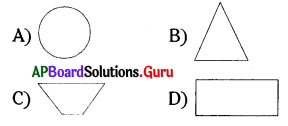
Answer:

Question 22.
Symbol for ‘is congruent to’ is …………………..
A) =
B) ≅
![]()
Answer:
B) ≅
Question 23.
A complete rotation means ………………….
A) 360°
B) 180°
C) 190°
D) 300°
Answer:
A) 360°
Question 24.
Number of lines of symmetry for a parallelogram is …………………
A) 2
B) 3
C) 0
D) 4
Answer:
C) 0
![]()
Question 25.
If a regular polygon contains ‘n’ sides then the number of lines of symmetry is …………………..
A) n2
B) n
C) 2n
D) [latex]\frac{\mathrm{n}}{2}[/latex]
Answer:
B) n
Question 26.
Which of the following has at least one line of symmetry ?
A) Honey Bee
B) Lotus
C) 8th class Mathematics Text Book
D) All the above
Answer:
D) All the above
Question 27.
Number of lines of symmetry for letter W is …………………
A) 9
B) 1
C) 3
D) 2
Answer:
B) 1
Question 28.
Which of the following letter has point symmetry ?
A) O
B) X
C) H
D) All the above
Answer:
D) All the above
Question 29.
The letter in the following has roational symmetry is ………………
A) O
B) E
C) H
D) All the above
Answer:
D) All the above
Question 30.
Number of lines of symmetry for letter N is ………………..
A) 1
B) 3
C) 4
D) 0
Answer:
D) 0
Question 31.
The letter which has two lines of symmetry is ………………..
A) H
B) I
C) O
D) All the above
Answer:
D) All the above
![]()
Question 32.
Two circles with same radii are ………………..
A) Similar
B) Congruent
C) Triangles
D) None
Answer:
B) Congruent
Question 33.
To measure the height of long distance objects …………….. similarity is useful.
A) Triangle
B) Quadrilaterd
C) Figure
D) None
Answer:
A) Triangle
Question 34.
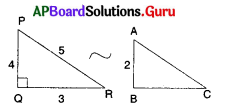 In the above firgure AC = ………………….
In the above firgure AC = ………………….
A) 3
B) 2
C) 2.5
D) 5.2
Answer:
C) 2.5
Question 35.
The patterns formed by repeating figures to fill a plane without gaps or overlaps are called ………………….
A) Angles
B) Tessellations
C) 0
D) None
Answer:
B) Tessellations
Question 36.
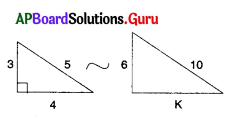 In the above figure K = ………………..
In the above figure K = ………………..
A) 6
B) 8
C) 10
D) 11
Answer:
B) 8
Question 37.
Symbol for ‘Similarity’ is ……………….
A) ~
B) ≅
![]()
D) =
Answer:
A) ~
![]()
Question 38.
Each angle in a square is ………………..
A) 60°
B) 90°
C) 100°
D) 99°
Answer:
B) 90°
Question 39.
Each angle in an equilateral triangle is ………………….
A) 80°
B) 70°
C) 75°
D) 60°
Answer:
D) 60°
Question 40.
Which of the following figure has four lines of symmetry ?
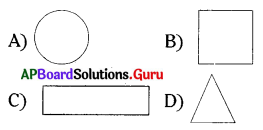
Answer:

